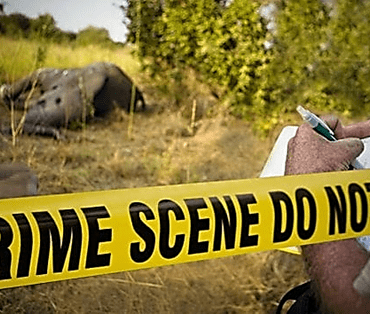Introduction:
For many years, footprints have been a vital source of information for forensic cases and criminal investigations. Even with the advancements in science such as DNA analysis, fingerprinting, and other areas, footprints continue to be among the most valuable forms of tangible evidence in forensic research. This article explores the key functions footprints serve in forensics, techniques for collecting and analyzing prints, and notable cases cracked through footprint evidence.
The Unique Value of Footprints:
Human feet contain distinctive ridges, creases, loops and other irregularities that make them unique. These characteristics imprinted in the Prints left behind in soil, sand, mud or other surfaces can thus provide crucial associations between suspects or victims and crime scenes.
Footprints offer proof that a person was present at the location in question. They can reveal footprint, stride length, weight, gait patterns and other useful details. Since suspects often lie about their whereabouts, footprints provide an impartial, scientifically sound record of where people actually traveled.
Footprints are also important because feet come into contact with the ground – accumulating dirt, blood, chemicals and other trace evidence. The impressions can capture this evidence for forensic study. Finally, footprints endure over time and are difficult to fully destroy or hide. This makes them a reliable form of proof long after a crime is committed.
Methods for Collecting Footprint Evidence:
To effectively utilize the potential of footprints, investigators must carefully record, lift, protect and preserve impressions left at crime scenes. Important methods consist of:
- Photographing prints from multiple angles under proper lighting conditions and using scales for size.
- Making casts by pouring dental stone, plaster, silicone or other materials into the print to capture depth and contours.
- Protecting impressions by building shelters or windbreaks around them at outdoor scenes.
- Lifting prints using adhesives, gelatin lifts, electrostatic methods or chemical enhancers.
- Properly packaging, labeling and storing footprint impressions to avoid damage during transport and storage.
Thorough documentation ensures investigators can conduct side-by-side comparisons later for identification purposes.
Analyzing and Comparing Footprint Evidence:
Once preserved, footprint impressions undergo expert analysis:
- Class characteristics are identified first – The general size/dimensions, tread designs, logos or wear patterns. This gives clues about the footwear type.
- Random characteristics like damage, cuts, rocks trapped in threads etc. can individualize prints and link them to a specific shoe.
- Pressure points, weight distribution and depth variations provide insight into gait, movement, body mechanics.
- Barefoot prints are examined for toe shapes, arch contours, creases, scars and other distinguishing anatomical features.
- Measurements are taken of stride length, foot angle, width between prints, and walking/running style.
- All impressions collected are systematically compared to eliminate possibilities and find definitive matches.
This analysis allows investigators to recreate events, trace movements, and link suspects to scenes through the uniqueness of human feet.
Using Foot Morphology for Identification:
A newer development is using foot morphology – the inherent shape and form of feet – for identification purposes. Studies have demonstrated that anatomical measurements and contours can match people to footprints with over 90% accuracy.
Morphology looks at arch curvature, ball width, toe shape, big toe angles and other structural features. By comparing crime scene prints to databases of known exemplars using morphology, suspects can be singled out. But for now, it complements traditional footprint analysis rather than replacing it.
Notable Limitations:
While extremely useful, footprints do have some limitations investigators must consider:
- Prints can be distorted by the impression surface, making comparisons difficult.
- Similar footwear can leave very alike prints lacking individualization.
- Partial, overlapped or degraded prints may lack key identifying details.
- Adverse weather conditions and other factors can degrade or obscure prints over time.
However, through proper recovery and expert examination, these challenges can often be overcome. In many cases, even partial footprints retain enough unique characteristics to aid investigators.
The Future of Footprint Forensics:
As technology improves, new techniques are enhancing footprint evidence collection and analysis:
- Digital photography makes record keeping, archiving, printing and sharing of print images easier for analysis.
- 3D laser scanning can capture extremely detailed digital models of prints for measurements and archiving.
- New chemical enhancement solutions improve visualization of faint, degraded impressions.
- Computer algorithms show promise for automating print analysis, classification and measurement.
Footprints continue to provide that vital physical connection between suspects and crime scenes, even though the fundamentals are still the same. Their unique value to forensic investigations will never diminish.
Famous Cases Solved by Footprint Evidence:
Footprints have delivered pivotal clues in many high-stakes criminal cases:
- The Lindbergh baby kidnapping – The culprit was identified based on impressions left on a homemade ladder that was discovered at the scene.
- The Yorkshire Ripper murders – The perpetrator was connected to the crimes by distinctive footprints found close to the victims’ bodies.
- The range Murders – Plaster casts of bare footprints led investigators to the offenders.
- The murder of Yvonne Layne – A bloody footprint inside her home was matched to the suspect’s shoe.
- The disappearance of Jim Thompson – Thompson’s footprints showed he walked alone into the Malaysian jungle.
These examples demonstrate how critical footprint impressions can be. Matching prints from crime scenes to suspects provides a solid connection that can make or break cases.
Conclusion:
For over a century, footprints have delivered remarkable evidence due to the individual characteristics of human feet. Footprints endure over time, capture trace materials, provide proof of location, indicate body mechanics and link suspects to scenes. Through careful documentation, recovery and expert analysis, investigators use footprints to recreate events, associate suspects with victims and crime scenes, and arrive at the truth. The future holds exciting advances in footprint forensics, but these imprints will always hold unique power.





Post comments (0)